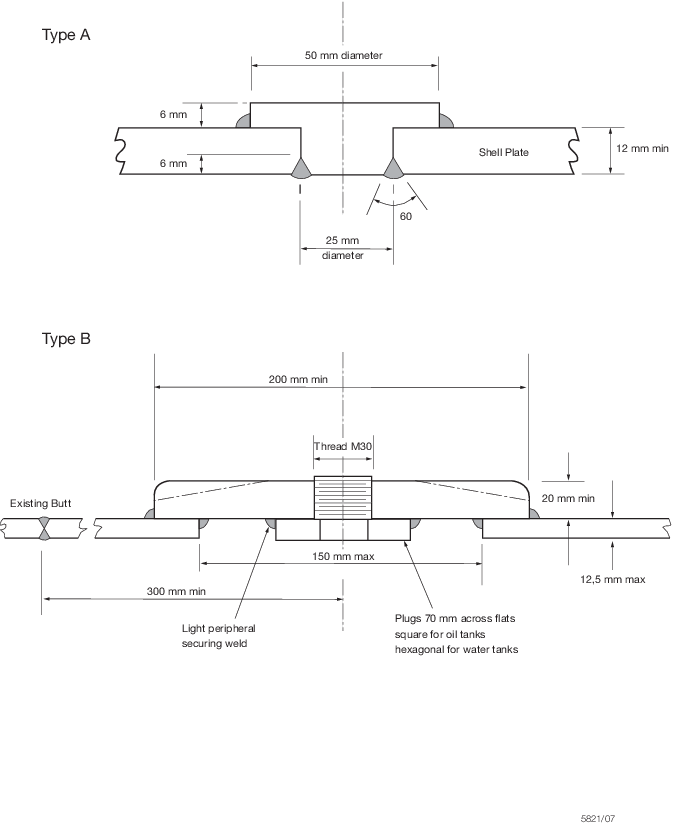11.1.1 Drain plugs
are not normally a classification matter, but if they are fitted Surveyors
should be guided by the following.
11.1.2 Drain plugs
are acceptable in double bottoms or other tanks, but should not be
fitted in open spaces such as bilges or wells.
11.1.4 Where the
shell plating is less than 12,5 mm, then an adequate pad or doubling
is to be fitted in way of plugs, so that the maximum number of threads
is obtained with screwed plugs, Type B, see
Figure 7.11.1 Typical drain plug arrangements.
11.1.5 Where the
plugs stand proud of the shell plating, then some form of tapered
chafing or protection ring should be fitted externally. Where the
underside of the pad is recessed to ensure the plug head is flush
with the shell, the minimum thickness of the pad is not to be less
than the shell thickness.
11.1.6 All welds
in way of drain plugs are to be inspected visually and checked with
a suitable NDE method.
11.1.7 For identification
purposes, plugs with square heads are often fitted to oil tanks and
hexagonal heads for water tanks.
11.1.8 Drain plugs
should be kept clear of docking blocks, welded seams or butts, flat
of keel, suction strums or any other arrangements inside tanks.
11.1.9 Tank numbers,
etc. may be welded adjacent to each plug for identification purposes.
11.1.10 Where pads
are to be fitted on higher tensile steel, then the pads should be
of the same grade of steel.

Figure 7.11.1 Typical drain plug arrangements